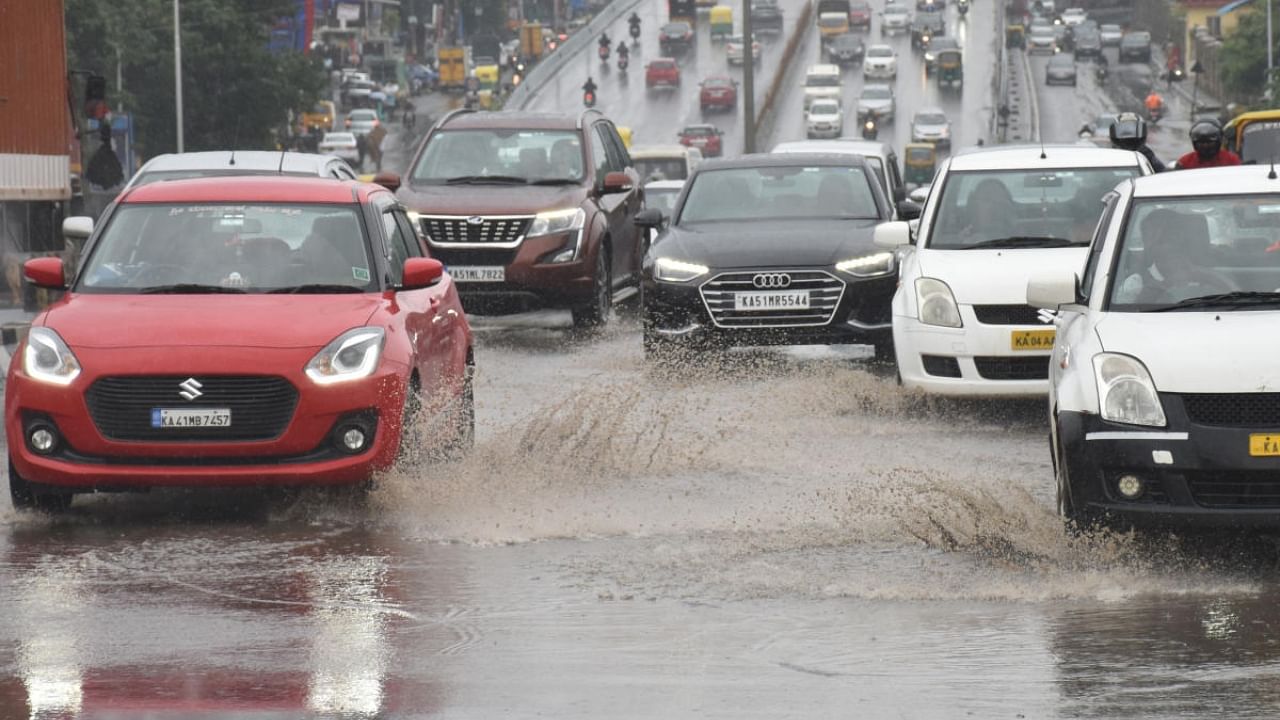
Rainfall in the first four days of August in many parts of Bengaluru has exceeded the normal for the month. And the weatherman has forecast “very heavy rainfall” in the coming days.
The India Meteorological Department’s weather station at HAL airport, seen as representative of the city’s eastern parts, recorded 125.6 mm of rainfall until 8.30 pm, Thursday. To put this in perspective, its normal rainfall for August is 114.9 mm.
The Bengaluru city weather station, seen as representative of the CBD and surrounding areas, recorded 131.8 mm until 8.30 pm. Its normal rainfall for August is 141.6 mm. The weather station at the Kempegowda International Airport (KIA) recorded 144.3 mm until 5.30 pm. Monthly average rainfall data for KIA is not available because the weather station was set up only a few years ago.
Since June 1, Bengaluru city has received 525 mm, as against the normal of 309 mm. HAL airport received 486 mm, as against 286 mm. KIA received 466 mm.
The annual mean total rainfall for Bengaluru city has also gone up considerably, from 986.8 mm to 1,077.8 mm.
The persistent intense rainfall is overwhelming stormwater drains, flooding streets and causing a traffic nightmare.
On Thursday, residents of an apartment complex on Sarjapur Road, Southeast Bengaluru, had to deploy two tractors to ferry their children to school because the whole area is marooned.
What’s causing these extreme weather events in Bengaluru? And why are they causing flash floods?
A hydrology expert, who was part of a team that submitted a detailed report on climate change to the state government two years ago, said climate change was the driving factor. “Not only has the rainfall become intense but it’s also occurring more frequently than ever before,” he explained.
He continued: “If the city gets 100 mm in 24 hours, it won’t affect much but 100 mm in just one hour can bring devastation.”
The flooding is because of urbanisation and encroachments on drains and lakes, he added.
The runoff coefficient in Bengaluru has gone up drastically in recent years.
Runoff coefficient is the ratio of the amount of rainwater that is not absorbed by the surface to the total amount of rainwater. In other words, this is the amount of rainwater that is absorbed by the surface.
The runoff coefficient in many parts of Bengaluru is as much as 90%, as against 35%-40% a few years ago.
“The rainwater isn’t finding a way out. Drains are either encroached upon or their carrying capacity has gone down because of silt accumulation,” he explained.